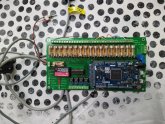Hi!
I am happy that I have joined the forum, I have been reading around and posted few questions. Very nice and friendly people!
I am building my own off-grid cottage. I have good software background and I am planning to develop my own BMS ( I will happily share it when it is working)
I have been reading info about all the different BMS out there, so I just need you to correct me if I am wrong about those assumptions:
A BMS task is:
-Cut the consumption when one or more of the cells are low on voltage.
-Cut the charging when the pack is full, by checking the total voltage or when temp is too low to charge.
-Will drain energy (turning on resistor) for individual cells if it is having higher voltage than the lowest voltage cell. (Only during charging)
Am I correct? is there more magic to it? I feel that I could be wrong, because it sounds too simple. I see diyBMS, electrodacus.. etc and think that they have worked so hard on these, so I must be missing something?
I am happy that I have joined the forum, I have been reading around and posted few questions. Very nice and friendly people!
I am building my own off-grid cottage. I have good software background and I am planning to develop my own BMS ( I will happily share it when it is working)
I have been reading info about all the different BMS out there, so I just need you to correct me if I am wrong about those assumptions:
A BMS task is:
-Cut the consumption when one or more of the cells are low on voltage.
-Cut the charging when the pack is full, by checking the total voltage or when temp is too low to charge.
-Will drain energy (turning on resistor) for individual cells if it is having higher voltage than the lowest voltage cell. (Only during charging)
Am I correct? is there more magic to it? I feel that I could be wrong, because it sounds too simple. I see diyBMS, electrodacus.. etc and think that they have worked so hard on these, so I must be missing something?



